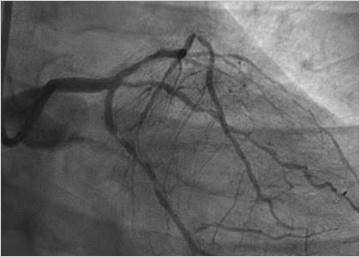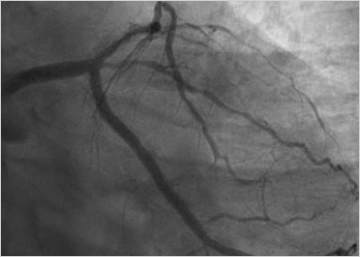Robotic-Assisted PCI with Intravascular Lithotripsy was performed using CorPath© GRX Vascular Robotic System on a 55-year-old patient.
About the patient and condition
A 55-year-old man with diabetes was admitted at Apollo Hospitals, Chennai with acute heart failure and severe left ventricular dysfunction.
Case Scenario
Patient previously had PCI of the LAD [Left anterior descending coronary artery] for an anterior wall MI. A coronary angiogram was performed and it revealed diffusely diseased LAD, with in-stent restenosis of the LAD stent, a long-segment densely calcified LCX, and a critical lesion in the mid-RCA [Right coronary artery]. Patient underwent a viability study, which showed non-viable LAD territory. One month after PCI of RCA, Robotic-Assisted PCI of the LCX, which included use of intravascular lithotripsy (IVL), was performed.
Dr. G. Sengottuvelu and his team used CorPath© GRX Vascular Robotic System for performing the procedure. An XB 3.0 6F guide catheter was introduced manually in the right radial artery and engaged the left main artery. A BMW guidewire was introduced and loaded into the CorPath Cassette. The guidewire was advanced robotically and crossed the LCX. A Guidezilla guide extension catheter was introduced in anticipation of difficulty in device delivery across the calcified LCX, with a retrograde take off of the LCX from the left main artery. Optical Coherence Tomography (OCT) was then performed, with the catheter remaining in the auxiliary track. OCT revealed dense circumferential calcium in the proximal and mid-LCX.
A 2.5mm IVL Shockwave balloon was loaded into the Cassette. Initial attempts to cross the LCX were not successful. With Guidezilla support, robotic controls advanced the IVL balloon and precisely positioned it across the lesion.
The obtuse marginal (OM) lesion was predilated with a 2.0x12mm Tazuna balloon, and a 2.0x28mm Xience Xpedition was deployed in the OM successfully. A 2.75x48mm Xience Xpedition was deployed in the proximal LCX and post-dilated with a 3.0x15mm Accuforce NC balloon. OCT was repeated, which showed stent malapposition in the mid-LCX. Postdilation with a 3.0x12mm Accuforce NC balloon was performed.
Worldwide Scenario
This is one of the first cases of robotic assisted PCI including the use of Shockwave IVL. Guidezilla comfortably integrated with CorPath© GRX and helped track the bulky Shockwave balloon.
Expertise at Apollo Hospitals
CorPath© GRX Vascular Robotic System was used in the treatment of a long segment densely calcified LCX. All steps of the procedure were done successfully and easily using robotic controls. At the end of the robotic-assisted PCI, OCT showed an optimally deployed stent. CorPath© GRX helped with precise placement of the Shockwave balloon and stent to achieve the desired result.
Apollo Hospitals – Touching Lives
Apollo Hospitals is the pioneer in Cardiac Surgery. Based on the condition of patient, most procedures are now performed via minimally invasive techniques. The introduction of CorPath© GRX Robotic System has enhanced the benefit by precise placement of stent and reduced radiation exposure to the patient when compared with traditional approach.
Patient’s testimonial:
Patient was highly satisfied with treatment and care given at Apollo Hospitals. His family thanked the entire team of Cardiology and the staff for all the support extended.





